Primates have existed on this planet for a million years, and throughout evolution, they have redistributed themselves on every corner of the earth. The group of primates includes humans, monkeys, and apes like chimpanzees, gorillas, etc.
Monkeys occupy a major share and have evolved themselves to sustain in the part of the world they are living in. Their body sizes and coloration vary too, thus dividing them into hundreds of species and subspecies. Therefore, in today’s article, we bring you the 14 Smallest Monkeys in the world.
Note: This article comprises the list of the smallest monkeys not ranking because of the unavailability of some information.
14 Smallest Monkeys in the World
14) Panamanian White Faced Capuchin
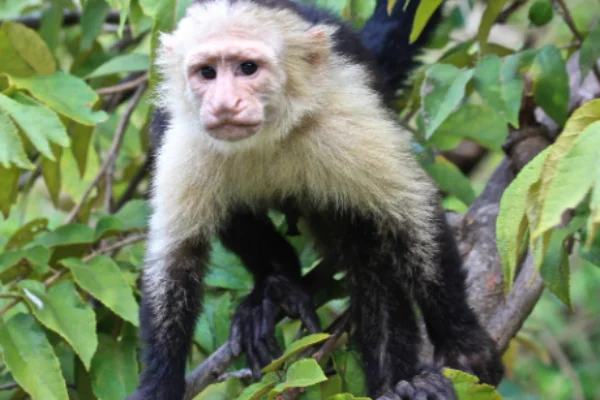
- Genus- Cebus
- Scientific Name- Cebus imitator
- Size- up to 81 cm (head to tail)
- Habitat- tropical forests
- Location- Central American Forests
This mid-sized monkey species, belonging to the New World Monkey group, has recently caught widespread attention after its feature in the famous film series Pirates of the Caribbean.
This monkey is slightly larger than other members on this list, with an average body length of 17 inches and weighing between 3.5 kilograms. It’s one of the most intelligent monkey species and has been found to use tools and herbs as medicine.
They can be identified by their distinct yellowish-white fur around the neck, chest, shoulders, and upper-arm region, followed by the average black-colored fur. They mostly feed on fruits and smaller invertebrates.
13) Talapoin Monkey
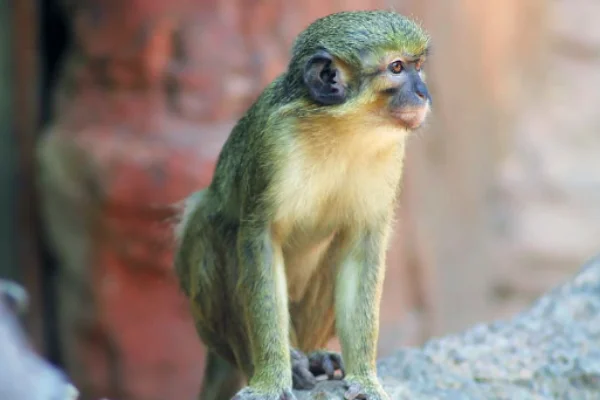
- Genus- Miopithecus
- Scientific Name- Miopithecus talapoin
- Size- average 34 cm
- Habitat- swamp forests
- Location- Central Africa
Now, let us shift from the New World Monkeys and shed some light on the smaller species of Old World Monkeys. The Talapoin monkey’s average body length is roughly around 15 inches, with males weighing about 1.3 kilograms and females with an average weight of 800 grams.
The Talapoin monkeys constitute the smallest species among the Old World monkeys and live near waters or swampy areas in large groups. They are marked by a hairless, snouted face and white underside of their bodies.
They depend on both land and water for their food, where they feed on fruits, aquatic plants, and smaller aquatic creatures.
12) Red-bellied Titi
- Genus- Plecturocebus
- Scientific Name- Plecturocebus moloch
- Size- average 33 cm
- Habitat- in forests and swamps along river and lake shores in the lower tree canopy
- Location- Brazil
Red-bellied Titi, better known as Dusk Titi, is another small monkey species belonging to the group New World Monkeys. They have an average head-to-body length of 13 inches and weigh somewhere around 1 kilogram, with females being lighter than males.
Dusk Titi gets their distinct appearance by the presence of facial pads and their striking red or reddish-brown colored bellies. They primarily forage on fruits but sometimes on young mammals, birds, and eggs.
11) Night Monkey
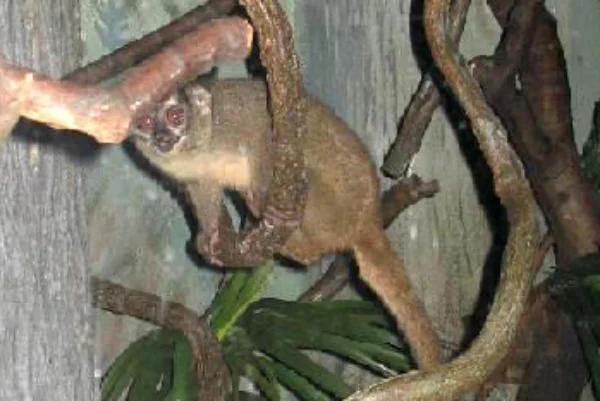
- Genus- Aotus
- Scientific Name- Aotus Leminurus (gray-necked), Aotus Azarae (red-necked)
- Size- 24 to 37 cm
- Habitat- rain forests, cloud forests, woodlands, and savannas
- Location- Panama and South America
The Night Monkey, also commonly called Owl Monkey, is the only nocturnal monkey species in the world. These monkeys are quite small in size and weigh anywhere between 450 to 850 grams, with a height of nearly 13 inches.
Night Monkey has large distinct brown eyes, which aid them in seeing in the dark. They get the name “Aotus,” meaning earless, from their ears which mostly remain hidden. They primarily feed on fruits but sometimes have been found to capture flying insects.
10) Squirrel Marmoset
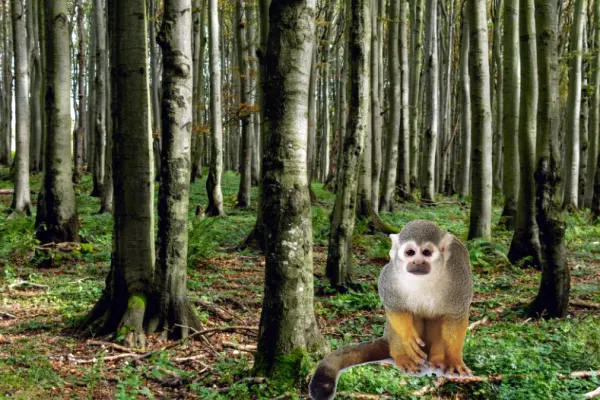
- Genus- Saimiri
- Scientific Name- Saimiri oerstedii (Central Americal Squirrel Monkey), Saimiri sciureus (Common Squirrel Monkey)
- Size- up to 31.75 cm (excluding tail); up to 40 cm (with tail)
- Habitat- close to rivers
- Location- Central and South American Tropical Forests
Next up on our list of the Smallest monkey species we have the Squirrel Monkeys. With an average head-to-body length of 9-12.5 inches and weighing around 500 to 700 grams, this species is one of the smallest monkeys on the planet.
They are characterized by a long slender tail and yellowish-brown fur. They are a social species and mostly feed on fruits, insects, smaller invertebrates, and reptiles. Plant exudates and nectar add-in to their diet.
9) Silvery Marmoset
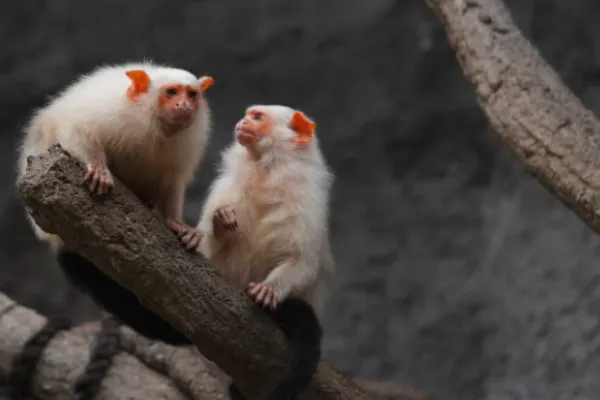
- Genus- Mico
- Scientific Name- Mico argentatus.
- Size- 18 to 28 cm (without tail); 26 to 38 cm (including tail)
- Habitat- tree hollows and among dense vegetation
- Location- Eastern Amazon Rainforest, Brazil.
The silvery marmosets are another species of the New World Monkeys, much like its other contemporaries on this list. They can be recognized easily from their naked ears, which stick outside their heads.
Their body sizes range from 7 to 11 inches and weigh less than half a kilogram. Like other marmosets, they too feed on plant sap and gums, seldom on eggs, insects, and fruits, and prefer the denser region of the forest as a good source of food.
8) Cotton-top Tamarin
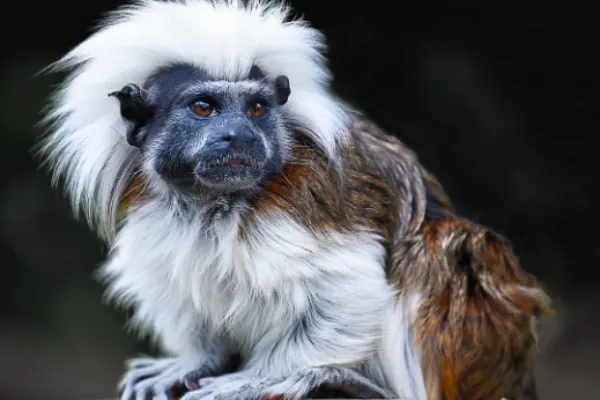
- Genus- Saguinus
- Scientific Name- Saguinus oedipus
- Size- 23 to 27 cm
- Habitat- humid tropical forest, dry deciduous forest, and secondary growth forest
- Location- Forests of North-Western Columbia
One of the smallest primates on the planet, the Cotton-Top Tamarins are only 8 to 10 inches long, from the head to the body. They derive their name from their distinctive sagittal crest, consisting of long white hairs that run down to almost their shoulders.
They mainly forage on plant items, like gums and fruits, and sometimes follow a carnivorous diet when they consume small reptiles or insects. With only 6000 of them left in the wild, their future existence continues to remain a subject of concern.
7) Black Handed Tamarin

- Genus- Saguinus
- Scientific Name- Saguinus Niger
- Size- 21 to 29 cm
- Habitat- semi-deciduous forest
- Location- Brazil
Black Handed Tamarins fall under the category of the smallest primates, with an average body length of less than one foot. They weigh approximately 500 grams and are an endemic species to Brazil.
This particular species of Tamarin constitutes a wide range of subspecies and closely related species, with all of them being almost the same body size and weight. They possess a grayish-black coat with a hairless face. The Black Handed Tamarins depend on fruits primarily as their food source.
6) White-lipped Tamarin
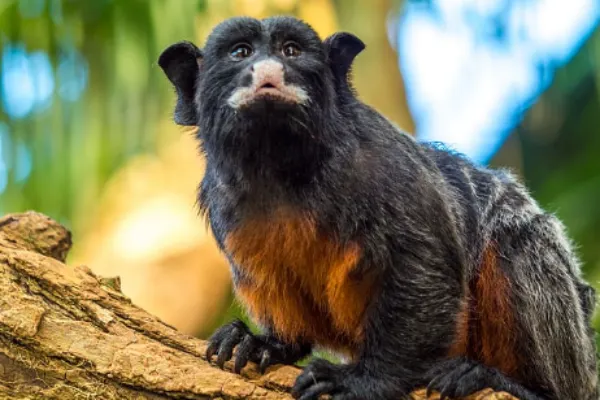
- Genus- Saguinus
- Scientific Name- Saguinus labiatus
- Size- 23 to 29 cm
- Habitat- middle canopy of trees
- Location- Brazil and Bolivia
Popularly known as Red-chested mustached Tamarin, they can be easily identified from their red coloration in their stomach and chest region. The presence of white mustache-like fur around their mouth is another striking feature of this species.
They grow up to a length of 9 to 11 inches and weigh approximately half a kilogram. They, too, primarily depend on fruits and plant products for their diet and shift to insects and smaller animals when fruits aren’t available in surplus.
5) Golden Lion Tamarin

- Genus- Leontopithecus
- Scientific Name- Leontopithecus rosalia
- Size- 15 to 25 centimeters (without tail)
- Habitat- in vines, bromeliads, and other epiphytes
- Location- Atlantic Coastal Forests of Brazil
Golden Lion Tamarin, also known as Golden marmoset, can be easily recognized by their striking body color. Their entire body is covered with a bright reddish-orange coat, with characteristic long hairs around the face, giving it a mane-like appearance like a Lion.
Their body size is roughly around 10 inches, and they weigh anywhere between 600 to 650 grams. It’s a highly endangered species, with an estimated 3,000 individuals left in the wild. Habitat loss, poaching, and lack of foraging grounds continue to be a major threat to these majestic creatures.
4) Emperor Tamarin
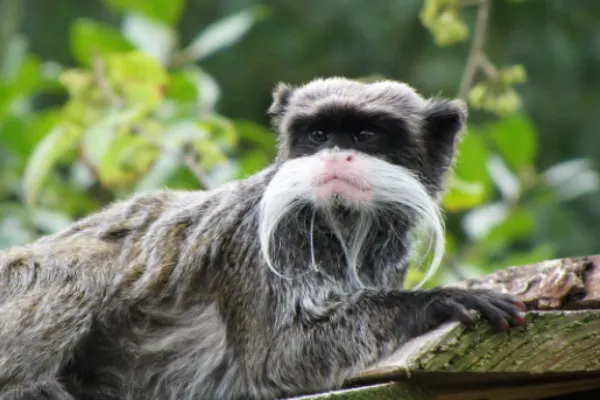
- Genus- Saguinus
- Scientific Name- Saguinus imperator
- Size- 22 to 25 cm
- Habitat- wooded habitats, including lowland, mountain and seasonal flooded forests
- Location- Parts of Brazil, Bolivia, and Peru
Emperor Tamarin monkey derives its name from the Emperor of Germany, Wilhelm II, due to its appearance. They are characterized by the presence of a distinct white mustache that runs down their face and curls up on both sides, along with a white beard.
This species reaches up to a length of 10 inches and weigh approximately 500 grams. Their diet consists of a plethora of things, from flowers, fruits, and plant exudates to smaller reptiles and invertebrates.
3) Common Marmoset
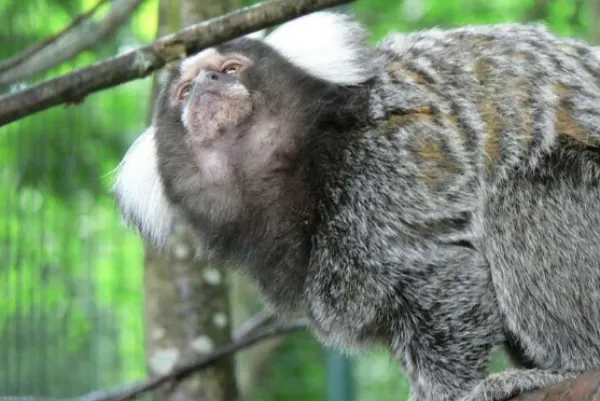
- Genus- Callithrix
- Scientific Name- Callithrix jacchus
- Size- 16 to 20 cm
- Habitat- extreme northern Atlantic coastal forest, dry, seasonal, semideciduous inland forests, riverine forests in dry thorn scrub habitat or caatinga
- Location- East Central Brazil
Another small member of the New World Monkey, the Common Marmoset, is known for the white tuft of hair from their ears, thereby earning them the name white-tufted marmosets.
Their bodies range between 6.5 and 8 inches with relatively longer tails and weigh nearly a quarter of a kilogram. They have a wide range of diets, from fruits and plant exudates to smaller reptiles, eggs, and also young ones of birds and smaller mammals.
2) Roosmalen’s Dwarf Marmoset
- Genus-Mico
- Scientific Name-Mico humilis
- Size- 38 to 39 cm (including tail)
- Habitat- primary and secondary terra firme rain forests and terra prestas forests
- Location-In the Amazon Rainforest
Next up on our list of the smallest monkeys in the world, we have the Roosmalen’s Dwarf Marmoset. The second smallest monkey species in the world after the Pygmy Marmoset, they have a body length of 15 inches, including a 9-inch-long tail.
These monkeys weigh anywhere between 150 to 180 grams and have a blackish crown and whitish ring bordering the face. Like other members of its species, they too feed on plant exudates.
1) Pygmy Marmoset
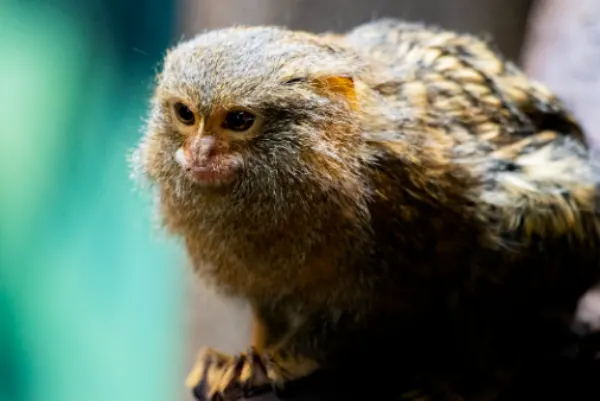
- Genus- Cebuella
- Scientific Name- Cebuella pygmaea (Western Pygmy Marmoset), Cebuella niveiventris (Eastern Pygmy Marmoset)
- Size-~13.5 cm
- Habitat- forest trees or bamboo thickets near or alongside rivers and floodplains
- Location- Western Amazon Basin
The pygmy marmosets are the smallest species of monkeys in the world and undoubtedly the smallest primates. Their average head-body length lies in the range of 4 to 6 inches, with a 7-9 inch long tail, and weigh anywhere between 100 to 120 grams.
They exhibit social dimorphism and are extremely well adapted for their arboreal life. They are primarily gum feeders, i.e., they forage on tree exudates and have sharp claws to extract them. These species are severely threatened by the widespread deforestation and exotic pet trade.
Here, we are concluding our article on 14 Smallest Monkeys in the world. We hope you like it. We will be bringing such informative articles shortly, so stay tuned until then.
References:
- A-Z animals
- Wikipedia
- BBC Wildlife Magazine
Also Read:

Meet Abhidept (nickname Monty), the visionary founder of How It See, being an engineering student, he’s fueled by an insatiable curiosity about the world around him. He is captivated by an eclectic correlation between animal groups, science, and nature, and this fascination drives his quest for understanding.
After completing his degree, he’s set on a mission to delve deep into the realm of nature, accumulating knowledge to share with you through his writing. In the meantime, he loves to watch anime and read anime.
